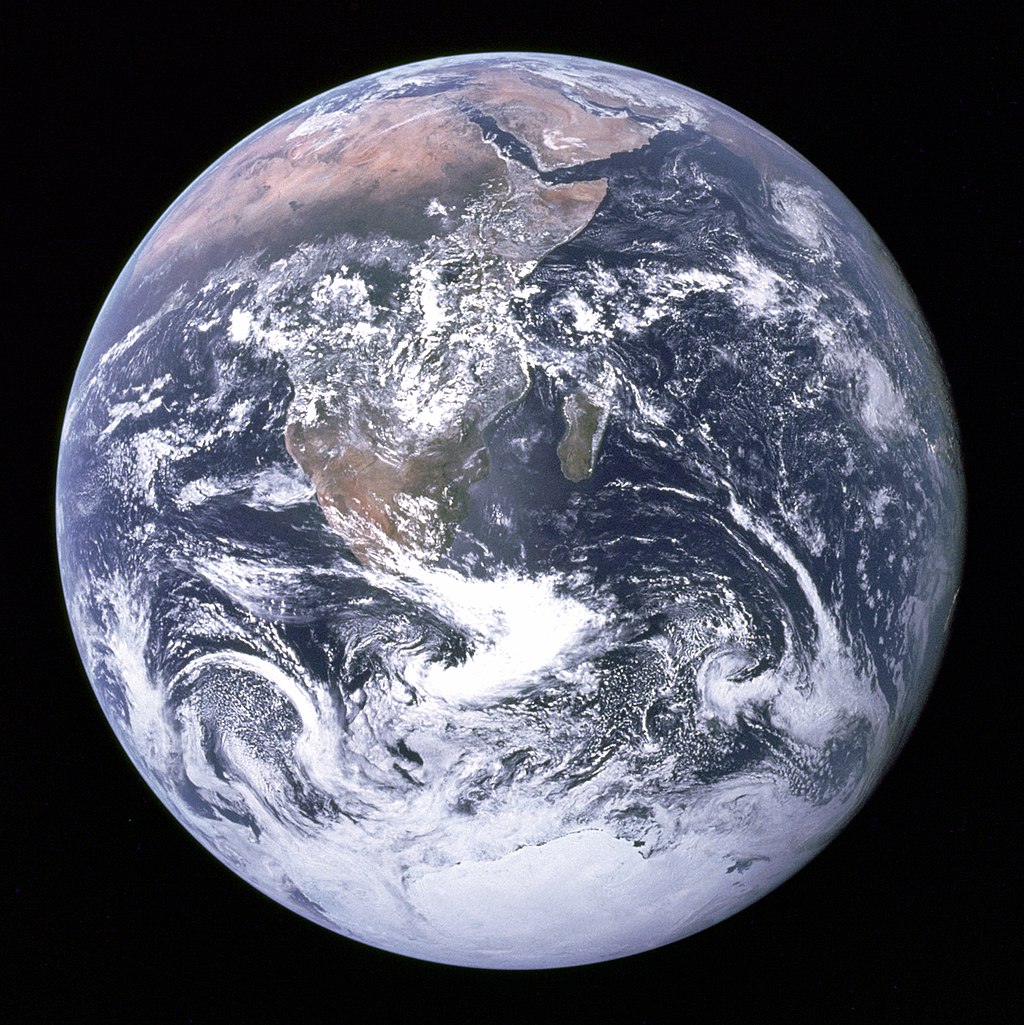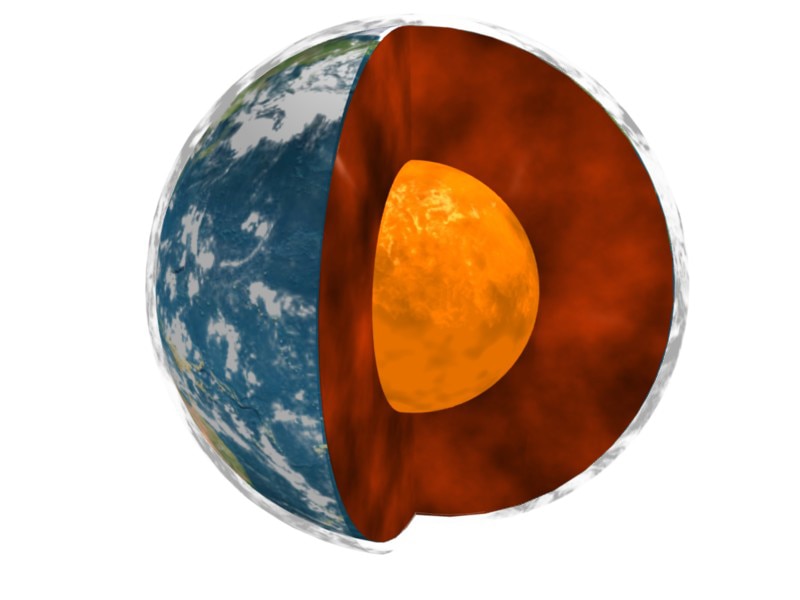Did Plate Tectonics Set the Stage for Life on Earth?

A new study suggests that rapid cooling within the Earth's mantle through plate tectonics played a major role in the development of the first life forms, which in turn led to the oxygenation of the Earth's atmosphere. The study was published in the March 2018 issue of Earth and Planetary Science Letters.
Scientists at the University of Adelaide and Curtin University in Australia, and the University of California at Riverside, California, USA, gathered and analyzed data on igneous rocks from geological and geochemical data repositories in Australia, Canada, New Zealand, Sweden and the United States. They found that over the 4.5 billion years of the Earth's development, rocks rich in phosphorus accumulated in the Earth's crust. They then looked at the relationship of this accumulation with that of oxygen in the atmosphere.
Phosphorus is essential for life as we know it. Phosphates, which are compounds containing phosphorus and oxygen, are part of the backbones of DNA and RNA as well as the membranes of cells, and help control cell growth and function.
To find out how the level of phosphorus in the Earth's crust has increased over time, the scientists studied how rock formed as the Earth's mantle cooled. They performed modeling to find out how mantle-derived rocks changed composition as a consequence of the long-term cooling of the mantle.
Their results suggest that during an early, hotter period in Earth's history – the Archaean period between four and 2.5 billion years ago – there was a larger amount of molten mantle. Phosphorus would have been too dilute in these rocks. However, over time, the Earth cooled sufficiently, aided by the onset of plate tectonics, in which the colder outer crust of the planet is subducted back into the hot mantle. With this cooling, partial mantle melts became smaller.
As Dr. Grant Cox, an earth scientist at the University of Adelaide and a co-author of the study, explains, the result is that "phosphorus will be concentrated in small percentage melts, so as the mantle cools, the amount of melt you extract is smaller but that melt will have higher concentrations of phosphorus in it."
Phosphorus' role in the oxidation of Earth
The phosphorus was concentrated and crystallized into a mineral called apatite, which became part of the igneous rocks that were created from the cooled mantle. Eventually, these rocks reached the Earth's surface and formed a large proportion of the crust. When phosphorus minerals derived from the crust mixed with the water in lakes, rivers and oceans, apatite broke down into phosphates, which became available for development and nourishment of primitive life.
Breaking space news, the latest updates on rocket launches, skywatching events and more!
The scientists estimated the mixing of elements from the Earth's crust with seawater over time. They found that higher levels of bio-essential elements parallel major increases in the oxygenation of the Earth's atmosphere: the Great Oxidation Event (GOE) 2.4 billion years ago, and the Neoproterozoic Oxygen Event, 800 million years ago, after which oxygen levels were presumed to be high enough to support multicellular life.
Even before the GOE, from approximately 3.5 to 2.5 billion years ago, some of the earliest life forms possibly generated oxygen through photosynthesis. However, during that time, most of this oxygen reacted with iron and sulfur in igneous rocks. To understand how these reactions affected oxygen levels in the atmosphere over a period of four billion years, the scientists measured the amounts of sulfur and iron in igneous rocks, and figured out how much oxygen had reacted. They compared all of these events with changes in levels of atmospheric oxygen. The scientists found that decreases in sulfur and iron along with increases in phosphorus paralleled the Great Oxidation Event and the Neoproterozoic Oxygen Event.
An explosion of life
All of these events support a scenario in which the cooling of the Earth's mantle led to the increase of phosphorus-rich rocks in the Earth's crust. These rocks then mixed with the oceans, where phosphorus-containing minerals broke down and leached into the water. Once phosphorus levels in seawater were high enough, primitive life forms thrived and their numbers increased, so they could generate enough oxygen that most of it reached the atmosphere. Oxygen reached levels sufficient to support multicellular life.
Dr. Peter Cawood, a geologist at Monash University in Melbourne, Australia, comments to Astrobiology Magazine that, "it's intriguing to think that the [oxygen] on which we depend for life owes its ultimate origin to secular decreases in mantle temperature, which are thought to have decreased from some 1,550 degrees Celsius some three billion years ago to around 1,350 degrees Celsius today."
Could a similar scenario be playing out on a possible exo-Earth? With the Kepler discoveries of a growing number of possibly Earth-like planets, could any of these support life? Cawood suggests that the finding is potentially significant for the development of aerobic life (i.e. life that evolves in an oxygen-rich environment) on exoplanets. "This is provided that [phosphorus] within the igneous rocks on the surface of the planet is undergoing weathering to ensure its bio-availability," says Cawood. "Significantly, the phosphorus content of igneous rocks is highest in those rocks low in silica [rocks formed by rapid cooling] and rocks of this composition dominate the crusts of Venus and Mars and likely also on exoplanets."
Cox concludes by saying that, "This relationship [between rising oxygen levels and mantle cooling] has implications for any terrestrial planet. All planets will cool, and those with efficient plate tectonic convection will cool more rapidly. We are left concluding that the speed of such cooling may affect the rate and pattern of biological evolution on any potentially habitable planet."
The research was supported by the NASA Astrobiology Institute (NAI) element of the NASA Astrobiology Program, as well as the National Science Foundation Frontiers in Earth System Dynamics Program and the Australian Research Council.
This story was provided by Astrobiology Magazine, a web-based publication sponsored by the NASA astrobiology program. This version of the story published on Space.com. Follow us @Spacedotcom, Facebook or Google+.


